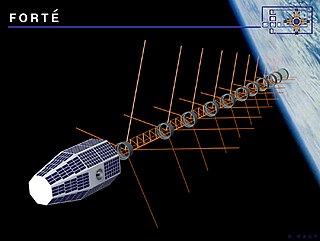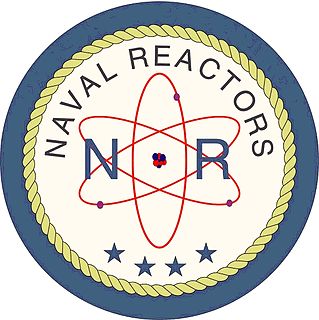 W
WThe United States Department of Energy (DOE) is a cabinet-level department of the United States Government concerned with the United States' policies regarding energy and safety in handling nuclear material. Its responsibilities include the nation's nuclear weapons program, nuclear reactor production for the United States Navy, energy conservation, energy-related research, radioactive waste disposal, and domestic energy production. It also directs research in genomics; the Human Genome Project originated in a DOE initiative. DOE sponsors more research in the physical sciences than any other U.S. federal agency, the majority of which is conducted through its system of National Laboratories. The agency is administered by the United States Secretary of Energy, and its headquarters are located in Southwest Washington, D.C., on Independence Avenue in the James V. Forrestal Building, named for James Forrestal, as well as in Germantown, Maryland.
 W
WThe United States Atomic Energy Commission, commonly known as the AEC, was an agency of the United States government established after World War II by U.S. Congress to foster and control the peacetime development of atomic science and technology. President Harry S. Truman signed the McMahon/Atomic Energy Act on August 1, 1946, transferring the control of atomic energy from military to civilian hands, effective on January 1, 1947. This shift gave the members of the AEC complete control of the plants, laboratories, equipment, and personnel assembled during the war to produce the atomic bomb.
 W
WThe Atmospheric Radiation Measurement Climate Research Facility is a United States Department of Energy scientific user facility for the study of global climate change by the national and international research community.
 W
WThe Bannister Federal Complex is a United States federal government complex at 1500 E. Bannister Road in Kansas City, Missouri. The 310-acre (125.5 ha) complex consists of 10 buildings at the corner of Troost Avenue and Bannister Road. The complex is occupied primarily by the General Services Administration and the Department of Energy. As of 2012 it was slated for closure by 2014.
 W
WThe Bonneville Power Administration (BPA) is an American federal agency operating in the Pacific Northwest. BPA was created by an act of Congress in 1937 to market electric power from the Bonneville Dam located on the Columbia River and to construct facilities necessary to transmit that power. Congress has since designated Bonneville to be the marketing agent for power from all of the federally owned hydroelectric projects in the Pacific Northwest. Bonneville is one of four regional Federal power marketing agencies within the U.S. Department of Energy (DOE).
 W
WThe Clinch River Breeder Reactor Project (CRBRP) was a joint effort of the U.S. Atomic Energy Commission and the U.S. electric power industry to design and construct a sodium-cooled fast-neutron nuclear reactor. The project was opposed by President Carter.
 W
WThe United States Energy Research and Development Administration (ERDA) was a United States government organization formed from the split of the Atomic Energy Commission (AEC) in 1975. It assumed the functions of the AEC not assumed by the Nuclear Regulatory Commission.
 W
WThe Energy Sciences Network (ESnet) is a high-speed computer network serving United States Department of Energy (DOE) scientists and their collaborators worldwide. It is managed by staff at the Lawrence Berkeley National Laboratory.
 W
WThe Ernest Orlando Lawrence Award was established in 1959 in honor of a scientist who helped elevate American physics to the status of world leader in the field.
 W
WThe adoption of plug-in electric vehicles in the United States is supported by the American federal government, and several states and local governments. As of August 2020, cumulative sales in the U.S. totaled 1.6 million highway legal plug-in electric cars since 2010, of which, 1 million are all-electric cars. The American stock represented 20% of the global plug-in car fleet in use by the end of 2019, and the U.S. had the world's third largest stock of plug-in passenger cars after China (47%) and Europe (25%).
 W
WThe James V. Forrestal Building is a low-rise Brutalist office building located in Washington, D.C., in the United States. Originally known as Federal Office Building 5, and nicknamed the Little Pentagon, the Forrestal Building was constructed between 1965 and 1969 to accommodate United States armed forces personnel. It is named after James Forrestal, the first United States Secretary of Defense. It became the headquarters of the United States Department of Energy after that agency's creation in 1977.
 W
WThe Fast On-orbit Rapid Recording of Transient Events is a lightweight satellite which was launched at about 8:30 AM on August 29, 1997 into a circular 800-kilometer (500 mi) low Earth orbit which is inclined 70 degrees relative to the Earth's equator, using a Pegasus XL rocket. It was developed and launched by the Sandia National Laboratory in cooperation with Los Alamos National Laboratory, as a testbed for technologies applicable to U.S. nuclear detonation detection systems used to monitor compliance with arms control treaties, and later to study lightning from space. The project was sponsored by the United States Department of Energy, and cost about US$35 million. It utilizes optical sensors, RF sensors, and an "event classifier" in order to make observations, including monitoring Very High Frequency (VHF) lightning emissions in the ionosphere occurring from between 50 to 600 miles above the surface of the Earth, and it will be a component of the VHF Global Lightning and Severe Storm Monitor (V-GLASS) system. Its primary mission is to record and analyze bursts of RF energy rising from the surface of the Earth. FORTE is 7-foot (2.1 m) tall, weighs 470-pound (210 kg), and is the first all-composite spacecraft, its framework being made entirely of graphite-reinforced epoxy. It consists of three decks with aluminum honeycomb cores, and composite facing to support the onboard instruments.
 W
WFrenchman Flat is a hydrographic basin in the Nevada National Security Site south of Yucca Flat and north of Mercury, Nevada. The flat was used as an American nuclear test site and has a 5.8 sq mi (15 km2) dry lake bed that was used as a 1950s airstrip before it was chosen after the start of the Korean War for the Nevada Proving Grounds. Nellis Air Force Base land 12 mi × 30 mi was transferred to the Atomic Energy Commission on which Site Mercury was constructed on the flat for supporting American nuclear explosive tests. The 1951 Operation Ranger "Able" test was the first continental US nuclear detonation after the 1945 Trinity test, and Frenchman Flat also had the only detonation of an American artillery-fired nuclear projectile in the 1953 Upshot-Knothole Grable test using the M65 Atomic Cannon.
 W
WThe Kansas City Plant is a National Nuclear Security Administration (NNSA) facility managed and operated by Honeywell Federal Manufacturing & Technologies that manufactures "85 percent of non-nuclear components that go into the [United States] nuclear stockpile." It was renamed the Kansas City National Security Campus in 2015.
 W
WCheryl Martin is an American chemist. She is currently with Harwich Partners, a consulting firm she founded to work with public and private sector entities to identify critical business, technology, finance, regulatory and policy drivers that would accelerate adoption of new technologies into key markets. Until November 2018 she was a member of the Managing Board at the World Economic Forum where she was responsible for a range of industry and innovation initiatives. Prior to joining the Forum, Martin served as Acting Director for the Advanced Research Projects Agency - Energy (ARPA-E), a United States Department of Energy initiative. In addition, she was the Deputy Director for Commercialization at the agency where she led ARPA-E's Technology-to-Market program, which helps breakthrough energy technologies succeed in the marketplace.
 W
WMercury is a distributed metadata management, data discovery and access system. It is a scientific data search system to capture and manage biogeochemical and ecological data in support of the Earth science programs funded by the United States Department of Energy (DOE) and United States Geological Survey (USGS) - Department of Interior (DOI). Mercury was originally developed for NASA, but the consortium is now supported by USGS and the DOE. Ongoing development of Mercury is done through an informal consortium at Oak Ridge National Laboratory.
 W
WA National Interest Electric Transmission Corridor (NIETC) corridor is a geographic region designated by the United States Department of Energy where electricity transmission limitations are adversely affecting American citizens. In 2005 the United States Congress granted the Department of Energy the authority to create these regions in an effort to speed the creation of more transmission capacity. Should state and local governments fail to issue permits allowing construction of new transmission, the Energy Policy Act of 2005 gives the Federal Energy Regulatory Commission (FERC) the authority to issue a federal permit empowering a project director to exercise the right of eminent domain to purchase property needed to complete the project.
 W
WThe United States Department of Energy National Laboratories and Technology Centers are a system of facilities and laboratories overseen by the United States Department of Energy (DOE) for the purpose of advancing science and technology to fulfill the DOE mission. Sixteen of the seventeen DOE national laboratories are federally funded research and development centers administered, managed, operated and staffed by private-sector organizations under management and operating (M&O) contract with DOE.
 W
WNaval Reactors (NR), also known as the Naval Nuclear Propulsion Program, is an umbrella term for the U.S. government office that has comprehensive responsibility for the safe and reliable operation of the United States Navy's nuclear propulsion program. A single entity, it has authority and reporting responsibilities within both the United States Department of the Navy, and the United States Department of Energy.
 W
WThe United States was the first country to manufacture nuclear weapons and is the only country to have used them in combat, with the separate bombings of Hiroshima and Nagasaki in World War II. Before and during the Cold War, it conducted over one thousand nuclear tests and tested many long-range nuclear weapons delivery systems.
 W
WPantex is the primary United States nuclear weapons assembly and disassembly facility that aims to maintain the safety, security and reliability of the U.S. nuclear weapons stockpile. The facility is located on a 16,000-acre site 17 miles (27 km) northeast of Amarillo, in Carson County, Texas in the Panhandle of Texas. The plant is managed and operated for the United States Department of Energy by Consolidated Nuclear Security and Sandia National Laboratories. Consolidated Nuclear Security, LLC (CNS) is composed of member companies Bechtel National, Inc., Leidos, Inc., Orbital ATK, Inc, and SOC LLC, with Booz Allen Hamilton, Inc. as a teaming subcontractor. CNS also operates the Y-12 National Security Complex.
 W
WThe Particle Physics Project Prioritization Panel (P5) is a scientific advisory panel tasked with recommending plans for U.S. investment in particle physics research over the next ten years, on the basis of various funding scenarios. The P5 is a temporary subcommittee of the High Energy Physics Advisory Panel (HEPAP), which serves the Department of Energy's Office of Science and the National Science Foundation. As of 2014, the panel was chaired by Steven Ritz of the University of California, Santa Cruz.
 W
WQ clearance or Q access authorization is the Department of Energy (DOE) security clearance required to access Top Secret Restricted Data, Formerly Restricted Data, and National Security Information, as well as Secret Restricted Data. Restricted Data (RD) is defined in the Atomic Energy Act of 1954 and covers nuclear weapons and related materials. The lower-level L clearance is sufficient for access to Secret Formerly Restricted Data (FRD) and National Security Information, as well as Confidential Restricted Data, Formerly Restricted Data, and National Security Information. Access to Restricted Data is only granted on a need-to-know basis to personnel with appropriate clearances.
 W
WA Safeguards Transporter (SGT) is a truck developed for and used by the National Nuclear Security Administration (NNSA), a semi-autonomous affiliate agency of the United States Department of Energy, for the ground transport of nuclear weapons in the contiguous United States. SGTs' trailers are known as Safe Secure Trailers (SST).
 W
WThe Southwestern Power Administration (Southwestern) is an agency of the U.S. Department of Energy. Southwestern's mission was established by Section 5 of the Flood Control Act of 1944. The agency is a power marketing administration responsible for marketing the hydroelectric power produced at 24 United States Army Corps of Engineers multipurpose dams. By law, the power and associated energy are marketed to publicly held entities such as rural electric cooperatives and municipal utilities. Southwestern has over one hundred such "preference" customers which ultimately serve over 8 million end use customers.
 W
WThe Spallation Neutron Source (SNS) is an accelerator-based neutron source facility in the U.S. that provides the most intense pulsed neutron beams in the world for scientific research and industrial development. Each year, this facility hosts hundreds of researchers from universities, national laboratories, and industry, who conduct basic and applied research and technology development using neutrons. SNS is part of Oak Ridge National Laboratory, which is managed by UT-Battelle for the United States Department of Energy (DOE). SNS is a DOE Office of Science user facility, and it is open to scientists and researchers from all over the world.
 W
WThe United States Department of Energy's State Energy Program (SEP) provides grants to states and directs funding to state energy offices from technology programs in Office of Energy Efficiency and Renewable Energy. States use grants to address their energy priorities and program funding to adopt emerging renewable energy and energy efficiency technologies. Started in 2010, the program "is the only program administered by the U.S. Department of Energy (DOE) that provides cost-shared resources directly to the states for allocation by the governor-designated State Energy Office for use in energy efficiency and clean energy innovation, development, and demonstration activities.”
 W
WThe Tennessee Valley Authority (TVA) is a federally owned corporation in the United States created by congressional charter on May 18, 1933, to provide navigation, flood control, electricity generation, fertilizer manufacturing, and economic development to the Tennessee Valley, a region particularly affected by the Great Depression. Senator George W. Norris (R-Nebraska) was a strong sponsor of this project. TVA was envisioned not only as a provider, but also as a regional economic development agency that would use federal experts and rural electrification to help modernize the rural region's economy and society.
 W
WThe Tonopah Test Range (TTR) is a restricted military installation located about 30 miles (48 km) southeast of Tonopah, Nevada. It is part of the northern fringe of the Nellis Range, measuring 625 sq mi (1,620 km2). Tonopah Test Range is located about 70 miles (110 km) northwest of Groom Dry Lake, the home of the Area 51 facility. Like the Groom Lake facility, Tonopah is a site of interest to conspiracy theorists, mostly for its use of experimental and classified aircraft. As such, it is not generally the focus of alien enthusiasts, unlike its neighbor. It is currently used for nuclear weapons stockpile reliability testing, research and development of fusing and firing systems, and testing nuclear weapon delivery systems. The airspace comprises restricted area R-4809 of the Nevada Test and Training Range and is often used for military training.
 W
WUnited States nuclear weapons were stored secretly at bases throughout Japan following World War II. Secret agreements between the two governments allowed nuclear weapons to remain in Japan until 1972, to move through Japanese territory, and for the return of the weapons in time of emergency.
 W
WUnited States of America v. Progressive, Inc., Erwin Knoll, Samuel Day, Jr., and Howard Morland, 467 F. Supp. 990, was a lawsuit brought against The Progressive magazine by the United States Department of Energy (DOE) in 1979. A temporary injunction was granted against The Progressive to prevent the publication of an article written by activist Howard Morland that purported to reveal the "secret" of the hydrogen bomb. Though the information had been compiled from publicly available sources, the DOE claimed that it fell under the "born secret" clause of the Atomic Energy Act of 1954.
 W
WThe Uranium Mill Tailings Remedial Action (UMTRA) Project was created by the United States Department of Energy (DOE) to monitor the cleanup of uranium mill tailings.
 W
WWeatherization or weatherproofing is the practice of protecting a building and its interior from the elements, particularly from sunlight, precipitation, and wind, and of modifying a building to reduce energy consumption and optimize energy efficiency.